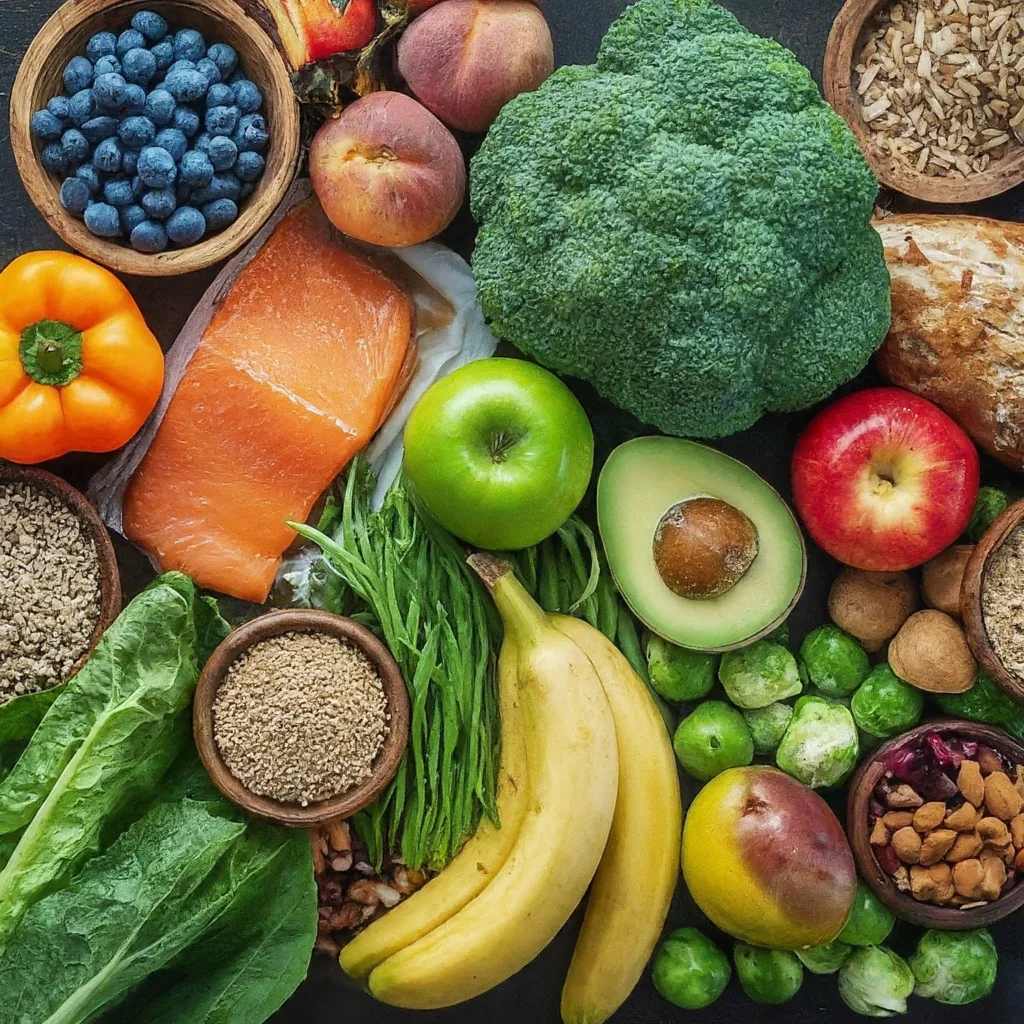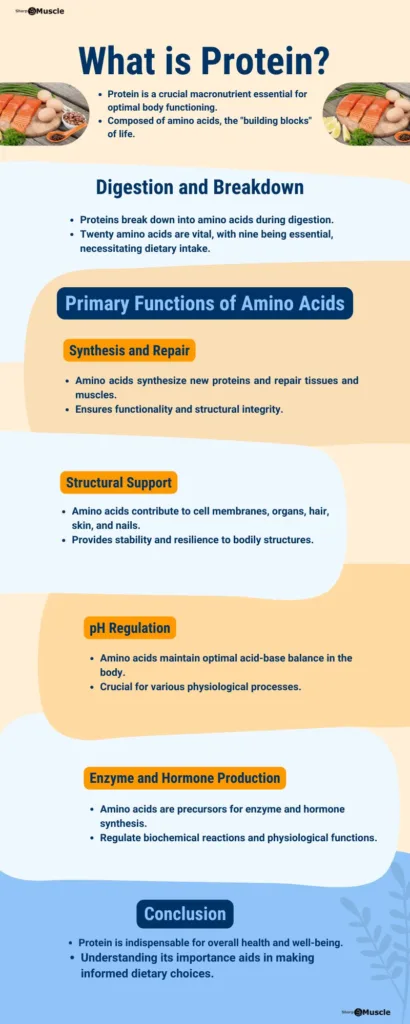Sometimes, our bodies can have unusual reactions after eating, including tremors or shakiness. While this sensation might be alarming, there are often explainable reasons behind it. Let’s explore some possible causes and how to manage it.
In This “Shaking After Eating” Article
Possible Reasons for Shaking After Eating
Shaking after eating can stem from various factors, each with its own distinct triggers and implications:
- Hypoglycemia: This occurs when blood sugar levels dip too low. It can happen in people both with and without diabetes. Symptoms include shakiness, sweating, rapid heartbeat, weakness, and dizziness. 1
- Caffeine or Sugar Crash: Consuming high amounts of caffeine or sugary foods and drinks can lead to a rapid energy spike followed by a “crash,” which may include trembling or jitters. 2 3
- Food Intolerance or Allergy: Shaking can be a symptom of an intolerance or allergy to certain foods. Common culprits include lactose (from dairy), gluten, or specific food ingredients. If you notice shakiness after consuming dairy products, consider the possibility of lactose intolerance. 4 5
- Anxiety or Stress: If you’re prone to anxiety, an episode triggered by a meal, the food itself, or the eating environment could cause shakiness. Stress hormones can have a physical impact on the body. 6 7
- Thyroid Issues: An overactive thyroid (hyperthyroidism) can cause various symptoms, including tremors. 8 9 10
- Medication Side Effects: Some medications, especially those affecting blood sugar levels or neurotransmitter activity, may induce shaking or tremors as a side effect. Check the information leaflet that comes with your prescriptions. 11 12 13
The Role of the Nervous System
Our bodies have a “fight or flight” response triggered by stressful situations. This ancient survival mechanism prepares us for danger by releasing hormones like adrenaline and cortisol. These hormones cause various physical reactions, including increased heart rate, sweating, and shakiness. The shakiness you experience may be due to the body mobilizing glucose (sugar) for energy in response to perceived stress.
If your tremors seem tied to anxiety around meals, relaxation techniques and addressing the root of your stress response may help. Consider practices like deep breathing exercises, meditation, or therapy to manage mealtime anxiety and potentially reduce tremors.
Deep breathing exercises can help slow your heart rate and activate the body’s relaxation response, counteracting the effects of stress hormones.
Meditation can help you develop a sense of calm and improve your tolerance of stress in general.
And therapy can help identify and address underlying anxieties that might be contributing to your mealtime stress.
Idiopathic Postprandial Syndrome (IPS)
Sometimes, the cause of shaking after eating remains unknown even after thorough investigation.
Idiopathic Postprandial Syndrome (IPS) involves symptoms similar to hypoglycemia, such as shakiness, sweating, and dizziness, but without the associated drop in blood sugar levels. 14
While the exact cause of IPS is unclear, researchers suspect it may be related to abnormal gut motility, hormonal imbalances, or heightened sensitivity to certain blood sugar fluctuations.
Doctors may recommend dietary changes to manage this condition. These adjustments often focus on smaller, more frequent meals, and limiting refined carbohydrates or other potential triggers you may uncover in your food journal. Keeping a log of what you eat and how you feel afterwards can help identify patterns and pinpoint specific foods that worsen your symptoms.
How to Determine the Cause
Identifying the reason behind your post-meal shakiness is crucial for effective management.
Here’s a step-by-step approach:
- Keep a Journal: This is your most powerful tool. For at least a few weeks, meticulously record:
- Foods and Beverages Consumed: Include portion sizes and ingredients.
- Timing of Meals: Note the exact times you eat.
- Shakiness: Record the time you start feeling shaky, how intense it is (mild, moderate, severe), and how long it lasts.
- Additional Symptoms: Mention any sweating, heart palpitations, dizziness, etc.
- Stress Levels: Rate your anxiety/stress on a scale of 1-10 before, during, and after your meals.
- Monitor Your Blood Sugar: If you suspect hypoglycemia, use a blood glucose meter to check your levels before meals and about 2 hours after eating. Record these readings in your journal. Be aware of any readings significantly below your normal range.
- See a Doctor: Take your detailed journal to your physician. They can:
- Review Your History: Discuss your medical history, recent diet changes, medications, and stress levels.
- Order Tests: Depending on your symptoms, they might recommend blood tests to check for conditions like thyroid issues, nutrient deficiencies, or food sensitivities.
- Provide Guidance: Offer tailored advice on further dietary changes, when to seek immediate care, and potential referrals to specialists like an endocrinologist or dietician.
Important: Even if initial self-monitoring doesn’t reveal obvious answers, the information you gather is invaluable for getting a proper diagnosis from a medical professional.
Be Your Own Advocate
Taking an active role in your health means communicating effectively with your doctor. Your detailed observations from your journal will provide the foundation for these crucial conversations.
Don’t be afraid to ask questions and push for the answers you need to understand the shaking you’re experiencing. Here are some questions to consider:
Seeking the Right Tests:
- “What tests might be helpful in pinpointing the cause of my shaking?”
- “Would it be beneficial to see a specialist, like an endocrinologist or gastroenterologist?”
Exploring Treatment Options:
- “Could this be related to my current medications, and are there alternatives?”
- “What dietary changes might help, and could you refer me to a registered dietician with experience in this area?”
- “Are there relaxation techniques or stress management approaches that might be beneficial?”
You are the expert on your own body. By being proactive and asking informed questions, you and your doctor can work as a team to find the best solutions for managing your shakiness and restoring your well-being.
Tips for Managing Shaking After Eating
While pinpointing the exact cause is critical, these strategies can help minimize shaking episodes while you investigate further:
1. Eat Balanced Meals
Focus on meals combining:
- Lean Protein: Chicken, fish, beans, tofu, eggs for sustained energy release and satiety.
- Healthy Fats: Avocado, nuts, seeds, olive oil to slow digestion and prevent blood sugar spikes.
- Complex Carbohydrates: Brown rice, whole-grain bread, vegetables provide steadier energy release than refined carbs.
2. Smaller, Frequent Meals
Instead of three large meals, try five to six smaller meals/snacks spaced evenly throughout the day. This keeps your blood sugar more stable, avoiding the dips and surges that can contribute to tremors.
3. Limit Caffeine and Sugary Foods
These can cause rapid spikes then crashes in blood sugar, triggering shakiness. Watch out for hidden sugars in processed foods and drinks, and gradually decrease your caffeine intake.
4. Practice Relaxation Techniques
If your shakiness is tied to anxiety:
- Deep Breathing: Engage in a few minutes of slow, deep breaths before and during meals to activate the calming parasympathetic nervous system.
- Meditation: Regular meditation practice can cultivate mindfulness and help manage overall stress levels.
- Progressive Muscle Relaxation: Practice tensing and releasing different muscle groups to reduce physical tension that can accompany anxiety.
5. Address Anxiety
If anxiety is a major contributor, consider seeking guidance from a therapist. They can teach you coping mechanisms and help you understand the root of your food or mealtime anxieties.
Important: These tips may need to be adjusted based on the specific cause of your shaking. For example, your doctor might suggest more specific dietary changes if you are diagnosed with hypoglycemia, food intolerances, or IPS.
Management Tips for Specific Conditions
1. Hypoglycemia
- Be Prepared: Always carry fast-acting carbohydrates like juice boxes, glucose tablets, or hard candy. Consume 15 grams of carbohydrates if you feel shaky or your blood sugar drops below your target range. Recheck your blood sugar in 15 minutes, and repeat the treatment if it’s still low.
- Long-Term Prevention: Work with your doctor or a dietician to create a meal plan focused on balanced meals, regular eating, and appropriate snacking to reduce the likelihood of hypoglycemic episodes.
- Educate Others: Inform friends, family, and coworkers about hypoglycemia. Teach them how to recognize the signs and how to assist you if a severe episode occurs.
2. Anxiety or Stress
Consult with a therapist specializing in anxiety disorders. They can offer:
- Cognitive Behavioral Therapy (CBT): Helps you identify and challenge negative thought patterns contributing to anxiety.
- Exposure Therapy: Gradually introduces you to anxiety-provoking situations (like eating), in a controlled setting, helping you develop healthier responses.
- Medication: In some cases, your doctor might recommend anti-anxiety medication in combination with therapy.
Alongside therapy, learn effective stress-management techniques like:
- Mindfulness Practices: Meditation, guided imagery, and yoga can foster calmness.
- Relaxation Techniques: Practice deep breathing, progressive muscle relaxation.
Important Note: These are starting points. A doctor or specialist will offer tailored advice based on the severity of your condition, other health factors, and your individual needs.
When to Seek Medical Advice
Consult a doctor if shaking interferes with daily life, is severe, accompanied by other worrisome symptoms, or doesn’t subside.
Resources and Support
- American Diabetes Association: https://www.diabetes.org
- Sites on food allergies and intolerances:
- Nutrition.gov: Has information about food allergies and intolerances, including major food allergens, signs and symptoms, and the FDA’s role in food allergy labeling
- AllergenOnline (http://www.allergenonline.org): Has a peer-reviewed allergen list and sequence searchable database to help identify proteins that may present a potential risk of allergenic cross-reactivity
- AAAAI: Has expert videos on topics pertaining to the difference between food allergy and intolerance
Important: This post offers general information, not medical advice. Always consult a healthcare professional for a diagnosis and personalized guidance.
- Hypoglycemia-Signs, Symptoms & Treatment |ADA. (n.d.). https://diabetes.org/living-with-diabetes/treatment-care/hypoglycemia.[↩]
- Staff, S. (2024, January 2). Sugar crash effects and how to fix them. Sanford Health News. https://news.sanfordhealth.org/healthy-living/sugar-crash-effects.[↩]
- Richards G, Smith A. “Caffeine consumption and self-assessed stress, anxiety, and depression in secondary school children.” J Psychopharmacol. 2015 Dec;29(12):1236-47. doi: 10.1177/0269881115612404. Epub 2015 Oct 27. PMID: 26508718; PMCID: PMC4668773.[↩]
- Milk Allergy Vs. Lactose Intolerance. (n.d.). FoodAllergy.org. https://www.foodallergy.org/resources/milk-allergy-vs-lactose-intolerance.[↩]
- Food allergy and intolerance. (n.d.). Better Health Channel. https://www.betterhealth.vic.gov.au/health/conditionsandtreatments/food-allergy-and-intolerance.[↩]
- Attia M, Ibrahim FA, Elsady MA, Khorkhash MK, Rizk MA, Shah J, Amer SA. “Cognitive, emotional, physical, and behavioral stress-related symptoms and coping strategies among university students during the third wave of COVID-19 pandemic.” Front Psychiatry. 2022 Sep 16;13:933981. doi: 10.3389/fpsyt.2022.933981. PMID: 36186888; PMCID: PMC9523087.[↩]
- Chao AM, Jastreboff AM, White MA, Grilo CM, Sinha R. “Stress, cortisol, and other appetite-related hormones: Prospective prediction of 6-month changes in food cravings and weight.” Obesity (Silver Spring). 2017 Apr;25(4):713-720. doi: 10.1002/oby.21790. PMID: 28349668; PMCID: PMC5373497.[↩]
- Website, N. (2023, April 18). Overactive thyroid (hyperthyroidism). nhs.uk. https://www.nhs.uk/conditions/overactive-thyroid-hyperthyroidism/.[↩]
- De Leo S, Lee SY, Braverman LE. “Hyperthyroidism.” Lancet. 2016 Aug 27;388(10047):906-918. doi: 10.1016/S0140-6736(16)00278-6. Epub 2016 Mar 30. PMID: 27038492; PMCID: PMC5014602.[↩]
- Schneider SA, Tschaidse L, Reisch N. “Thyroid Disorders and Movement Disorders-A Systematic Review.” Mov Disord Clin Pract. 2023 Feb 3;10(3):360-368. doi: 10.1002/mdc3.13656. PMID: 36949803; PMCID: PMC10026317.[↩]
- NCI Thesaurus. (n.d.). https://nciterms.nci.nih.gov/ncitbrowser/pages/concept_details.[↩]
- MedWatch Online Voluntary Reporting Form. (n.d.). FDA. https://www.accessdata.fda.gov/scripts/medwatch/index.[↩]
- O’Donovan B, Rodgers RM, Cox AR, Krska J. “Use of information sources regarding medicine side effects among the general population: a cross-sectional survey.” Prim Health Care Res Dev. 2019 Dec 10;20:e153. doi: 10.1017/S1463423619000574. PMID: 31818345; PMCID: PMC7003519.[↩]
- Berlin I, Grimaldi A, Landault C, Cesselin F, Puech AJ. “Suspected postprandial hypoglycemia is associated with beta-adrenergic hypersensitivity and emotional distress.” J Clin Endocrinol Metab. 1994 Nov;79(5):1428-33. doi: 10.1210/jcem.79.5.7962339. PMID: 7962339.[↩]














